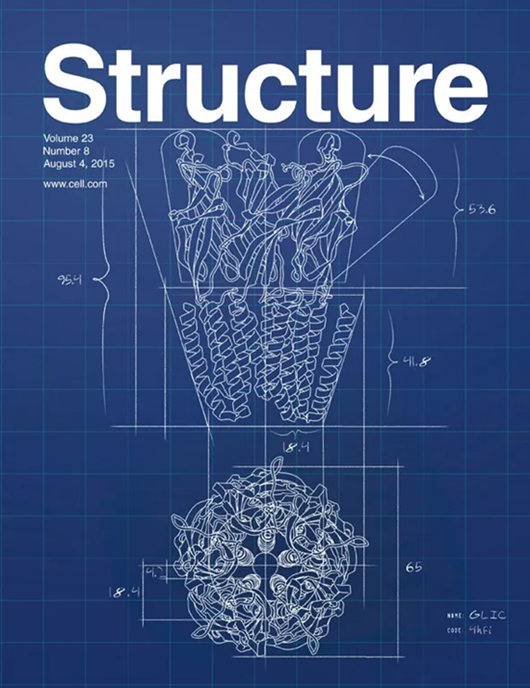第一次接触:接触素 2 的完整结构
IF 4.4
2区 生物学
Q2 BIOCHEMISTRY & MOLECULAR BIOLOGY
引用次数: 0
摘要
在本期《结构》杂志上,Fan 等人1 报告了完整的接触素 2 外结构域的结构,这是接触素家族的首次发现。该研究揭示了六个免疫球蛋白结构域对于细胞间的相互作用至关重要,探讨了所提出的接触素 2 同源二聚化机制的差异,并为细胞内和细胞间的接触素 2 组织提供了一个最新模型。本文章由计算机程序翻译,如有差异,请以英文原文为准。
First contact(in): The complete structure of contactin 2
In this issue of Structure, Fan et al.1 report the structure of the full contactin 2 ectodomain, representing the first for the contactin family. The work reveals six immunoglobulin domains are essential for intercellular interactions, explores differences in proposed contactin 2 homodimerization mechanisms, and provides an updated model for contactin 2 organization on and between cells.
求助全文
通过发布文献求助,成功后即可免费获取论文全文。
去求助
来源期刊

Structure
生物-生化与分子生物学
CiteScore
8.90
自引率
1.80%
发文量
155
审稿时长
3-8 weeks
期刊介绍:
Structure aims to publish papers of exceptional interest in the field of structural biology. The journal strives to be essential reading for structural biologists, as well as biologists and biochemists that are interested in macromolecular structure and function. Structure strongly encourages the submission of manuscripts that present structural and molecular insights into biological function and mechanism. Other reports that address fundamental questions in structural biology, such as structure-based examinations of protein evolution, folding, and/or design, will also be considered. We will consider the application of any method, experimental or computational, at high or low resolution, to conduct structural investigations, as long as the method is appropriate for the biological, functional, and mechanistic question(s) being addressed. Likewise, reports describing single-molecule analysis of biological mechanisms are welcome.
In general, the editors encourage submission of experimental structural studies that are enriched by an analysis of structure-activity relationships and will not consider studies that solely report structural information unless the structure or analysis is of exceptional and broad interest. Studies reporting only homology models, de novo models, or molecular dynamics simulations are also discouraged unless the models are informed by or validated by novel experimental data; rationalization of a large body of existing experimental evidence and making testable predictions based on a model or simulation is often not considered sufficient.
 求助内容:
求助内容: 应助结果提醒方式:
应助结果提醒方式:


